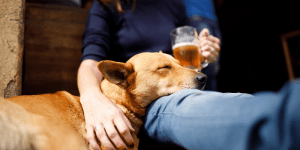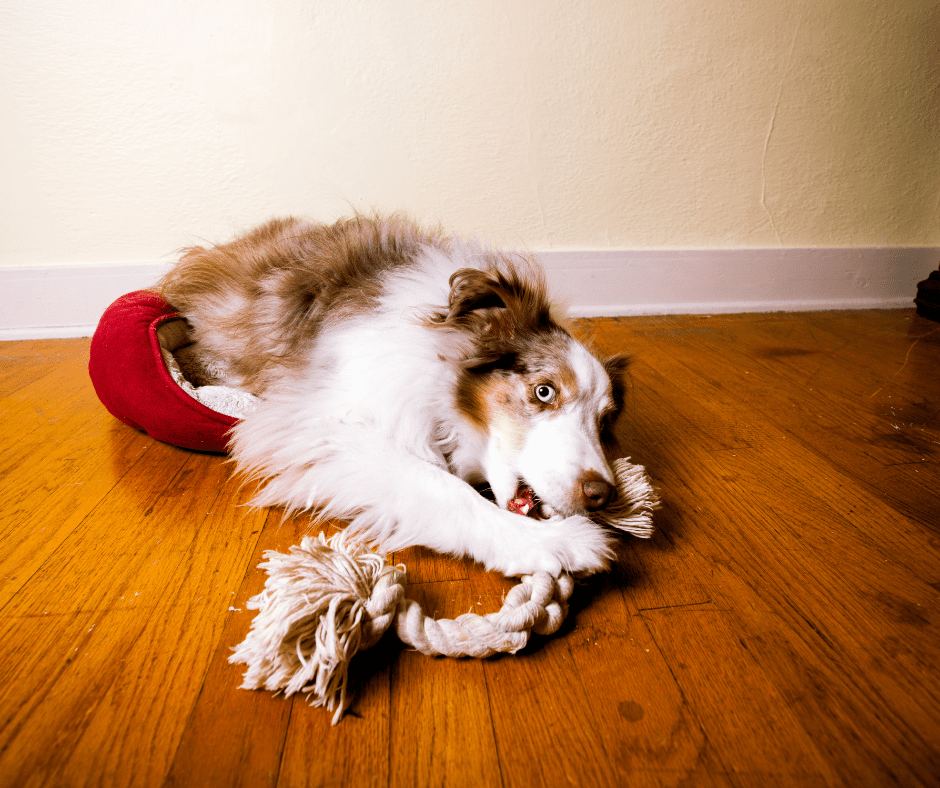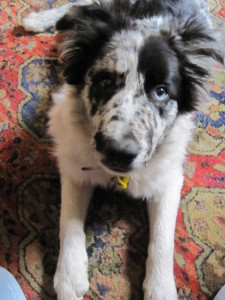Indoor Games For Dogs.
Dogs thrive on daily physical exercise, especially working or hunting breeds. Occasionally, however, it might not be possible to take your dog out on their daily jaunts. This may be due to illness, or injury – (you, or your dog) – or, perhaps the weather may be exceptionally hot, or cold. In this article, Holidays4Dogs provides some ideas for indoor games for dogs.
Indoor play should not replace outdoor exercise long term. But, it can be good to have some ideas for exercising your dog indoors, when walking is not an option.
Of course, dogs will certainly enjoy these games even after a good daily run outside! Many dogs will certainly appreciate that the fun doesn’t necessarily have to stop, after their walk is over.
Sometimes it can be demanding keeping a young dog, or puppy, entertained throughout the day. Therefore, these indoor games are ideal boredom busters for dogs who need more attention.
Interacting with dogs in this way helps build a nice bond. The more interesting things you can do to keep them focused on you, the more improvement you will see in your dog’s behaviour and attentiveness.
Puzzle toys.
Food dispensing toys are another good way to keep a bored dog entertained. There are many different types on the market such as the Buster Cube and Kongs. These can be filled with different varieties of treats. Snuffle mats are also great fun for dogs and can keep them entertained for a good amount of time. You can buy these in pet stores, or try making your own.
There are many more innovative designs appearing on the market which encourage dogs to use their brains. Not only are they a great way to keep dogs entertained, they are useful to keep your dog busy if you need to pop out without them.
Find the treat/toy.
Hiding treats, or toys, around the house is a great way to tire out any dog and it’s an indoor games that can be as much fun for people as it is for pooches. Dogs expend a lot of energy using their noses, so this is great way to exercise dogs indoors, not just physically – but mentally.
Begin by placing a treat somewhere obvious, then gradually hide them in harder to find places. Once your dog has got the hang of it, you can put them in another room while you hide a treat, or toy, then let them in to find it.
Clicker Training.
Clicker training is ideal for incorporating games into indoor training sessions. A session teaching your dog some new tricks and behaviours with the clicker, will often tire your dog out more than a walk. It is a great stress and boredom reliever for dogs and absorbing and interesting for the trainer too.
Hide and Seek.
This is a good way to exercise your dog’s mind and body, while also working on recall skills. Each family member can arm themselves with tasty treats and hide throughout the house, calling the dog and rewarding generously when the dog finds them.
As your dog gets better and better at this, stop calling your dog, but let him find you while you stay quiet.
Retrieve Games.
This game may depend on the space available in your house and your dog’s existing skills in retrieving items. Clicker training is an excellent way to teach your dog to retrieve. While this can often be an exuberant game outdoors, you can tone this down for indoor purposes. Teach your dog to be much calmer collecting the article.
Use soft toys rather than hard balls, which will bounce from surface to surface encouraging too much twisting – (and may also damage household items).
Obstacle Course.
Even small spaces can be set up with mini agility, or obstacle, courses. You could use items around the house such as cushions, or books and use garden canes to make mini jumps. Chairs can make tunnels and other items could form a line for the dog to weave in and out of.
Guide your dog around these obstacles using food as a lure, if you need to. Do make sure that you don’t encourage young, or old dogs, to jump over anything very high. Although this game is great for exercising your dog indoors, it is more about control and concentration rather than speed. In addition, exercises like this can help the dog to be more aware of their own movements.
Socialising.
Although technically this is going out and about with your dog, it can still be indoors. Nowadays, there are hundreds of pet friendly cafes, coffee shops and pubs where your pet  can accompany you and learn social skills. Socialising is really important for puppies, especially.
can accompany you and learn social skills. Socialising is really important for puppies, especially.
However, try to make sure all the pup’s new experiences are positive ones. Some dogs might find busy places too overwhelming.
You could consider taking your dog to the pet shop. Most large pet stores welcome dogs on leads and it will certainly be an interesting place for your dog to visit and socialise.
If you have friends with sociable dogs you could also arrange to visit so that your dogs can play and interact with each other.
Obedience training.
Working on general obedience always starts in the home, where it’s usually quiet and there are few distractions. Work on general obedience such as sit, down and stay. Once you have practiced this in the home environment, you will find the transition to places where there are more distractions, will be more successful.
Conclusion.
Outdoor exercise and regular walks are essential for any healthy pet dog. However, sometimes this isn’t possible – if your dog is recuperating, or elderly, for instance. There are lots of ways you can entertain and exercise your dog indoors – all of which can keep their mind and body active.






